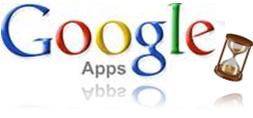Recently we see a lot of confusion between terms “social media marketing“, “online marketing” and “digital marketing“. The tendency to confuse those terms and use them as synonyms is clearly seen in the job postings.
While there are lot of similarities, a job titled “Director of Social Media Marketing” (for example) is much less demanding expertise –wise than a job with a title “Director of Digital Marketing“.
If we go by the diagram Social media marketing is a term reserved for a relatively young area of Online marketing which is under the vast periphery of Digital Marketing.
What is the difference between Digital marketing and Internet marketing?
The big difference is in the type of marketing techniques used. Internet marketing, although using the digital Internet, focuses on every means of getting information to potential customers about products and services a merchant is offering using only the Internet. Digital marketing uses all the channels available in the digital media to get information to customers, and it does not limit itself to the Internet.
The roots of confusion probably lie in the nature of media channels. Mobile networks are a mobile media in a sense that they provide the tools for information delivery and two-way communications. At the same time mobile gadgets could be used to connect to social media sites, and in this regards they serve as a medium for social marketing platforms.
What does this mean to Internet Marketers? Well, they will be forced to become digital marketers in order to survive and Social media marketing has to be a must under Digital marketing.
Anyway, have another look at the graph (and cry, or laugh) and have a rethink about what you need to do to take advantage of this forthcoming opportunity.
Don’t waste your valuable time marketing your practices to acquire new clients. Hope you believe in the notion –“Time is money”. Connect to us to know how to get more of both.
You spend time focusing on your processes and practices, while we will be managing your marketing and real lead Acquisition.
We vary by not just providing a range of services, but hold a deeper philosophy to make sure your brand message works harder and better than ever.
While there are lot of similarities, a job titled “Director of Social Media Marketing” (for example) is much less demanding expertise –wise than a job with a title “Director of Digital Marketing“.
If we go by the diagram Social media marketing is a term reserved for a relatively young area of Online marketing which is under the vast periphery of Digital Marketing.
What is the difference between Digital marketing and Internet marketing?
The big difference is in the type of marketing techniques used. Internet marketing, although using the digital Internet, focuses on every means of getting information to potential customers about products and services a merchant is offering using only the Internet. Digital marketing uses all the channels available in the digital media to get information to customers, and it does not limit itself to the Internet.
What is the difference between Social Media Marketing and Digital Marketing?
Social media marketing is one of the components of digital marketing along with SEO, email marketing, PPV, PPC, banner advertising, mobile marketing and various forms of digital advertising – billboards, DTV (digital television), etcThe roots of confusion probably lie in the nature of media channels. Mobile networks are a mobile media in a sense that they provide the tools for information delivery and two-way communications. At the same time mobile gadgets could be used to connect to social media sites, and in this regards they serve as a medium for social marketing platforms.
Trends
If we look into the graph, we will see how the popularity of Internet Marketing is decreasing while Digital Marketing and social media marketing are increasing. Now why is that happening? Well, marketing has reached beyond the world of Internet and is now available not only on your computer, but also on your mobile phone, Tablets, TV and other means of communications. We mean Digital marketing is Internet marketing, but also much more, as it uses more channels to reach people. Social media marketing is comparatively younger than Digital marketing and Online marketing, but the steady growth in the graph leaves nothing to put in the picture about its success.What does this mean to Internet Marketers? Well, they will be forced to become digital marketers in order to survive and Social media marketing has to be a must under Digital marketing.
Anyway, have another look at the graph (and cry, or laugh) and have a rethink about what you need to do to take advantage of this forthcoming opportunity.
Don’t waste your valuable time marketing your practices to acquire new clients. Hope you believe in the notion –“Time is money”. Connect to us to know how to get more of both.
You spend time focusing on your processes and practices, while we will be managing your marketing and real lead Acquisition.
We vary by not just providing a range of services, but hold a deeper philosophy to make sure your brand message works harder and better than ever.



